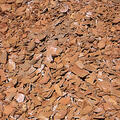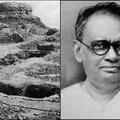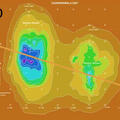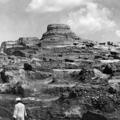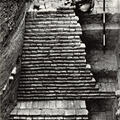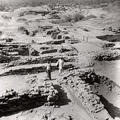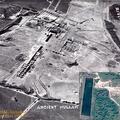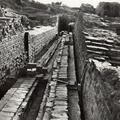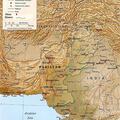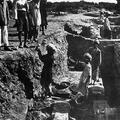Excavation of Pottery Debris
Discarded ancient Indus sherds, after archaeologists have sifted through them and cleaned them. This pottery debris from excavations at Harappa covers hundreds - if not a thousand – years of habitation, far longer a period than say modern times. One can imagine each sherd having its own story, connected to another sherd now far away in the pile, the centuries layered upon each other in the sunlight.
1 and 2. Sorted and discarded pottery sherds from continuing excavations at Harappa since 1985.
3. Earth and debris excavated from the houses and streets of DK-I area was dumped directly onto parts

